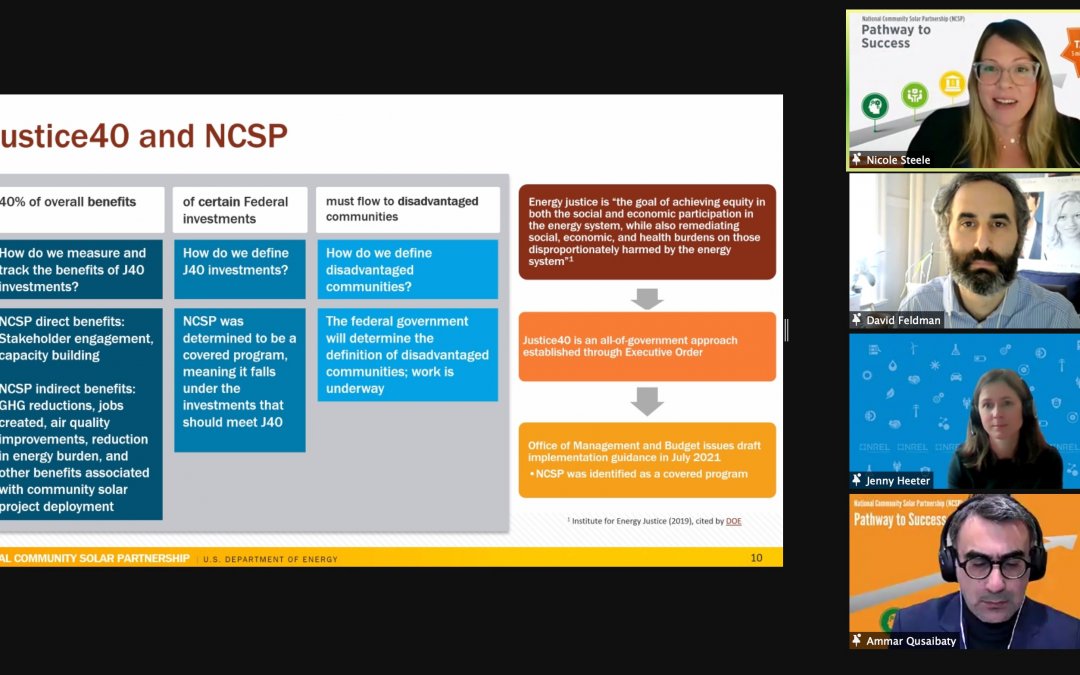WASHINGTON – Solar energy plays an integral part in transitioning American energy away from carbon emissions, experts said at a Department of Energy summit on Tuesday.
“The only way to get out from under (climate change) is to build out clean energy, as much and as fast as we possibly can,” Energy Secretary Jennifer Granholm said during her keynote address. “Of course, community solar has an essential role in that.”
Community solar — an approach to energy generation that gives individuals savings on monthly electric bills if they subscribe to portions of nearby solar arrays — powers approximately 600,000 U.S. households.
“Solar is the fastest growing source of new electricity generation in the nation,” said Kelly Speakes-Backman, who leads the department’s Office of Energy Efficiency and Renewable Energy.
The summit highlighted the department’s new goal of powering the equivalent of 5 million households with community solar by 2025, in turn creating $1 billion in energy bill savings. Announced last October, this target is the roadmap for the National Community Solar Partnership, in collaboration with Lawrence Berkeley National Laboratory and National Renewable Energy Laboratory.
Nicole Steele, who leads the partnership, said this goal closely aligns with the Biden administration’s intent to make American electricity carbon-free by 2035.
“We spent the past year really listening to our stakeholders and understanding what the major challenges and barriers are,” Steele said.
The number of Americans who still lack access to affordable solar electricity represents a great challenge, according to solar experts.
“Not everybody can put solar panels on the roof,” Granholm said. “Whether they rent or they live in a big apartment building, they just can’t afford it. Too many of those folks are in lower-income communities and communities of color.”
The department’s Low-Income Energy Affordability Data Tool reveals that the average energy burden is three times higher for low-income households due to the high cost of energy-inefficient houses.
“They don’t have to be left out and we’re going to make sure that they won’t be, with community solar,” Granholm said.
The department’s strategy identifies key steps, including building technical expertise.
“We need to improve knowledge sharing, which is why we released our Solar Power in Your Community Guidebook, which of course is to help local governments increase solar deployment,” Granholm said.
Jenny Heeter, the National Renewable Energy Laboratory’s senior energy analyst, explained how the partnership’s 5 million goal aligns closely with Biden’s Justice40 executive order, which aims to deliver at least 40% of benefits from federal investments in clean energy to disadvantaged communities.
The partnership was determined to be a covered program in Biden’s whole-of-government effort, meaning it must abide by Justice40 guidelines.
According to Heeter, work is underway to determine the definition of “disadvantaged communities,” which differs from the community solar market’s “low and moderate-income subscribers” terminology.
‘Disadvantaged communities’ can mean lots of things,” Heeter said. “Income is one component, but other components are things like ‘are they flagged as an environmental justice community?’”
Granholm concluded her address by emphasizing community solar progress that has already been achieved, including Illinois’ Gar Creek Solar project that primarily benefits low- and moderate-income residents.
“We want more projects like Gar Creek — far more in every state across the country and we need your help to make it happen,” she said, addressing the audience of clean energy organizations. “I know we have the talent and we have the expertise and we got the gumption to get this done.”


